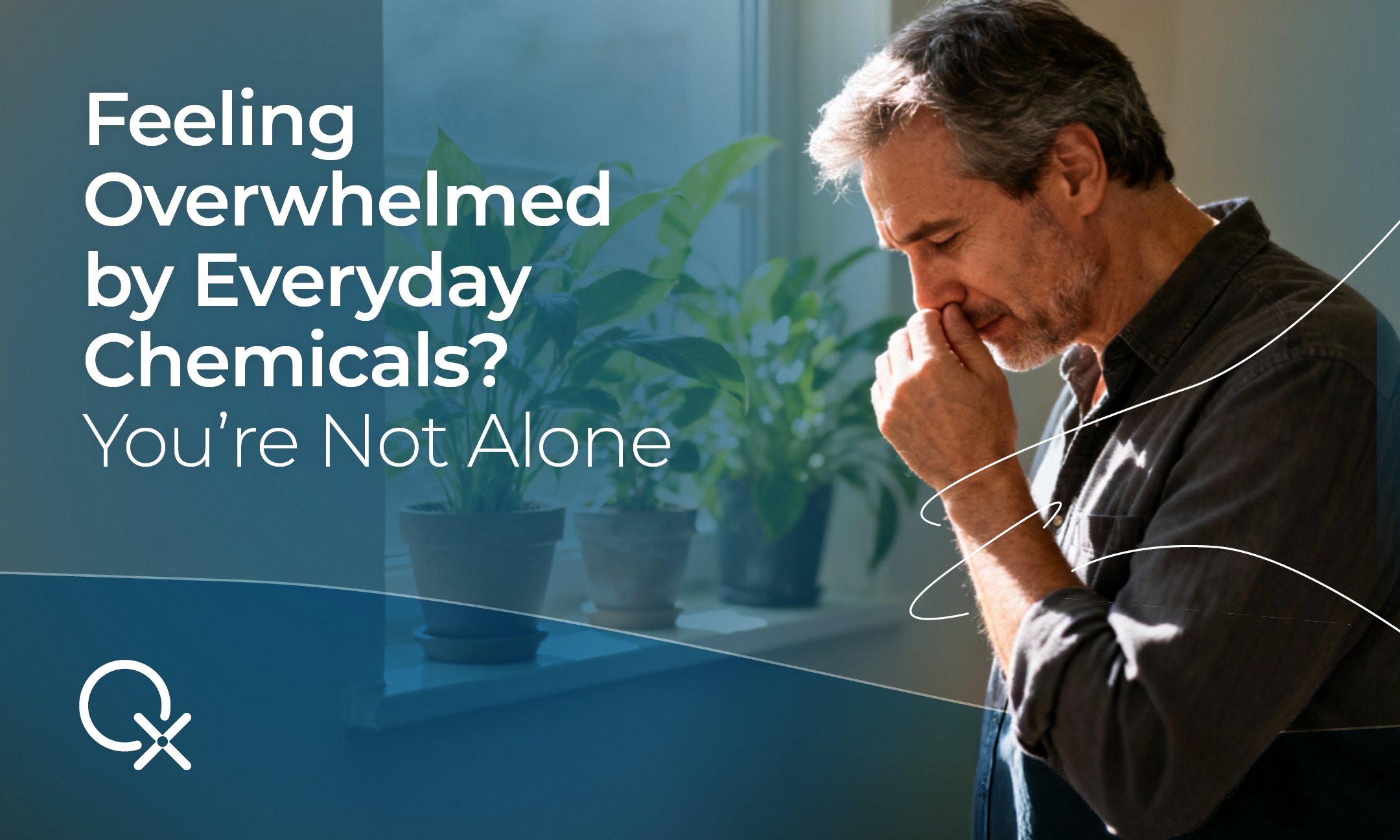
A condition that challenges daily life for many, multiple chemical sensitivity (MCS) causes strong reactions to everyday substances like perfumes, cleaning products, or smoke. Even small exposures can trigger uncomfortable symptoms, leaving people feeling overwhelmed and misunderstood. For some, just walking into a freshly cleaned office or sitting near someone wearing cologne can spark reactions that last for hours.
While Multiple Chemical Sensitivity (MCS) is still debated in the medical community, the reality is simple: the symptoms are real, and they affect daily living. By learning what MCS symptoms look like, identifying triggers, and exploring natural strategies for multiple chemical sensitivity treatment, people can begin to reclaim comfort and confidence.
Multiple chemical sensitivity (MCS), also called idiopathic environmental intolerance, is a condition in which people react to low levels of common chemicals.
Often triggered by:
MCS is not officially recognized by all medical authorities, but the lived experience of those affected is undeniable. Some wonder, “Can multiple chemical sensitivity kill you?” The condition itself is not considered fatal, but unmanaged symptoms can lead to stress, social withdrawal, and significant disruptions to health and well-being.
Multiple chemical sensitivity symptoms can feel unpredictable, confusing, and vary from mild till severe. Många describe den as their body going in i "overdrive” after exposure.
Over time, these symptoms can impact quality of life, leading many to seek supportive treatment.
Triggers vary widely from person to person, but the most common include:
For people with multiple chemical sensitivities, even tiny exposures can cause reactions that linger for hours or even days.
Multiple chemical sensitivites are notoriously difficult to diagnose. Unlike other conditions, there is no single lab test or biomarker. Instead, diagnosis usually depends on:
Because of this, many patients face skepticism or misdiagnosis, often cycling through multiple specialists before finding validation. This experience can be discouraging, but awareness and self-advocacy are powerful tools for moving forward.
One supportive approach is biofeedback, a non-invasive therapy that helps people become more aware of their body’s stress responses. By monitoring subtle signals like heart rate and skin response, biofeedback teaches the nervous system how to relax more effectively.
Since many experts believe the nervous system is deeply involved in MCS, calming it may reduce reactivity to triggers. Fördelar of biofeedback kan inkludera:
Quantum biofeedback, a non-invasive method, delivers subtle energetic feedback that helps the body recognize stress patterns, process them, and restore balance.
Many individuals with sensitivities report that quantum biofeedback not only provides noticeable relief but also helps them understand how stress overload begins, how it connects to mind–body patterns, and how it eventually affects the body. This greater awareness often leads to improved resilience and empowerment.
While no universal cure exists, multiple chemical sensitivity treatment often focuses on supportive self-care and environment changes:
Is multiple chemical sensitivity a real condition?
Yes. Although not fully recognized in every medical system, the symptoms are very real and well-documented in people worldwide.
What are the most common triggers for multiple chemical sensitivities?
Perfumes, cleaning products, smoke, exhaust, paint fumes, and plastics are among the most frequent triggers.
Can MCS improve over time?
Many people do experience improvement, especially when they reduce exposures and support their nervous system. While it may not disappear completely, symptoms often become more manageable.
How can I reduce my reactions to chemical exposure?
Focus on prevention and resilience — avoid triggers, create a chemical-free home, practice stress management, and consider supportive therapies like biofeedback.
What role does stress play in MCS?
Stress increases nervous system reactivity, making exposures harder to tolerate. Relaxation practices and nervous system support are key parts of multiple chemical sensitivity treatment.
Q: Can multiple chemical sensitivity kill you?
No, MCS itself is not considered fatal. However, unmanaged symptoms can deeply affect emotional well-being, mobility, and daily functioning.
Q: Can chemical sensitivity go away?
In some cases, symptoms lessen significantly over time. Complete recovery may not happen for everyone, but lifestyle adjustments often bring long-lasting relief.
Final Thoughts: Living with multiple chemical sensitivity can be challenging, but it’s not hopeless. By understanding MCS symptoms and triggers, creating a safer home environment, and exploring holistic approaches like biofeedback, it’s possible to regain balance and well-being.
Awareness, patience, and consistent care empower individuals with MCS to live more comfortably and with renewed confidence in their daily lives.